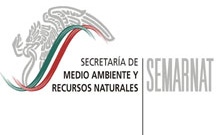
|  |  |  Editorials | Environmental | July 2009 Editorials | Environmental | July 2009  
Opportunities Created for Undertaking Environmental Projects on the Mexico-United States Border
 Presidencia de la República Presidencia de la República
go to original
July 24, 2009


| | Secretariat of the Environment and Natural Resources (SEMARNAT) |  |
Mexico City - The Board of Directors of the Ecological Border Cooperation Commission (COCEF) and the North American Bank of Development (BDAN), to which the Secretariat of the Environment and Natural Resources forms part, announced that as from this year, this bank is now fully capitalized.

The governments of Mexico and the United States made the last capital payment for $13,998,393 USD, thereby enabling the Bank to achieve the total subscription of its initial capital for the sum of $450 million USD.

This poses a major challenge to both institutions as regards developing more environmental infrastructure projects along Mexico’s northern border, not only on the 100 km of the border but up to 300 km on either side (which includes virtually the entire state of Nuevo León).

At its seventh meeting, held in San Antonio, Texas, the Board of Directors explored key issues for the future of both institutions. As a result, the Bank will present its clients with new credit policies and loans at preferential rates, designed to shift supply and demand for environmental infrastructure projects towards clean, renewable technologies to cope with Climate Change.

The Binational Board of Directors approved the certification of six environmental infrastructure projects on the Mexican border, with a total estimated cost of $38.1 million dollars and approved credit for $28 million USD and non-refundable resources for $2.37 million USD. This project will benefit 723,546 residents in the border region.

Among the projects already approved of are five involving safe drinking water, sewage and drainage for the municipalities of Tijuana and Playas de Rosarito, Baja California.

The State Public Service Commission of Tijuana (CESPT), the organization responsible for providing services for both municipalities, has undertaken three projects to extend drainage networks to three neighborhoods currently lacking this service: Aztlán, Independencia and Lomas de Rosarito in Playas de Rosarito; as well as one for expanding the Rosarito I Wastewater Treatment Plant.

CESPT is currently undertaking another project to expand potable water distribution systems in Tijuana, which includes the construction of two new storage tanks with a total capacity of 9.0 million liters and the expansion of the sewage system to provide service for 15,667 dwellings.

Altogether, these projects constitute a total investment of $37.8 million USD by CESPT in Tijuana and Playas de Rosarito.

The sixth certified project involves expanding the potable water distribution system in the district of Esperanza in Chihuahua, which entails building new water networks, 360 residential water inlets and a chlorine disinfection unit.

The projects also received $2.37 million USD in non-refundable resources from the Border Environment Infrastructure Fund (BEIF) provided by the US Environmental Protection Agency.

The federal secretariats comprising the Board of Directors include the Secretariats of the Environment and Natural Resources, Foreign Affairs and Finance and Public Credit, the last of which served as president of the seventh meeting.

The representatives of the Mexican federal government hailed the capitalization of the Bank, adding that in the current conditions of restricted sources of financing, both institutions are being consolidated as an alternative for financing key environmental projects for the border.

They also called for efforts to be redoubled and coordination between the institutions to be strengthened, urging them to explore opportunities in new sectors, particularly those dealing with adaptation to Climate Change.

During the meeting, COCEF and BDAN expressed their concern over the effects of global warming and told their Board of Directors that they are aware that part of their current mission is to deal with this issue on the shared border and strengthen alliances between the three levels of government in order to help deal with this imminent problem in both countries.

COCEF is an international organization established by the governments of Mexico and the United States that works to support the preservation, protection and enhancement of the environment in the border region, in order to increase the well-being of the population in both countries by facilitating strategic initiatives and sustainable projects through a transparent process of binational certification involving close coordination with BDAN, international, federal, state and local organizations, the private sector and civil society.

During its 14 years of operation, COCEF has certified 150 environmental infrastructure projects at an estimated cost of $3.232 billion dollars, of which BDAN has financed nearly $964.5 million dollars through credits and non-refundable resources to support 128 of them. It is estimated that the projects certified by COCEF and financed by BDAN benefit nearly 12 million inhabitants in the border region between Mexico and the United States by providing the necessary infrastructure to achieve a cleaner environment.

Source: Media and Communications Office. Secretariat of the Environment and Natural Resources (SEMARNAT). |

 |
|  |



